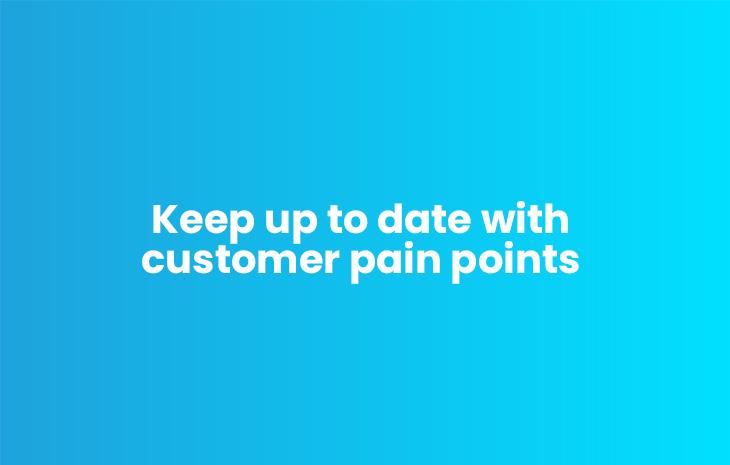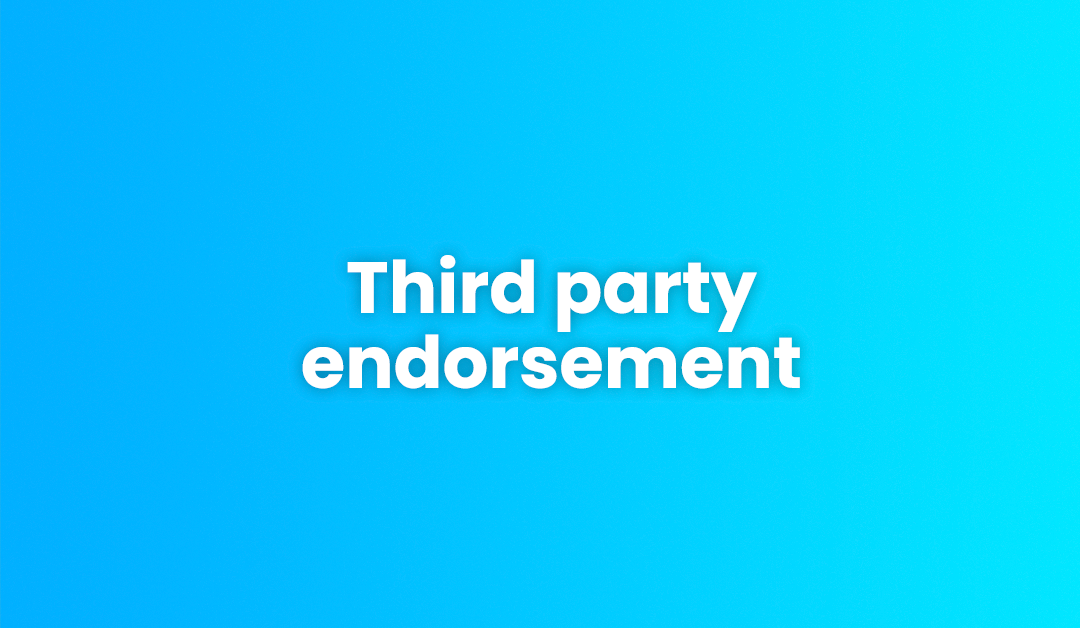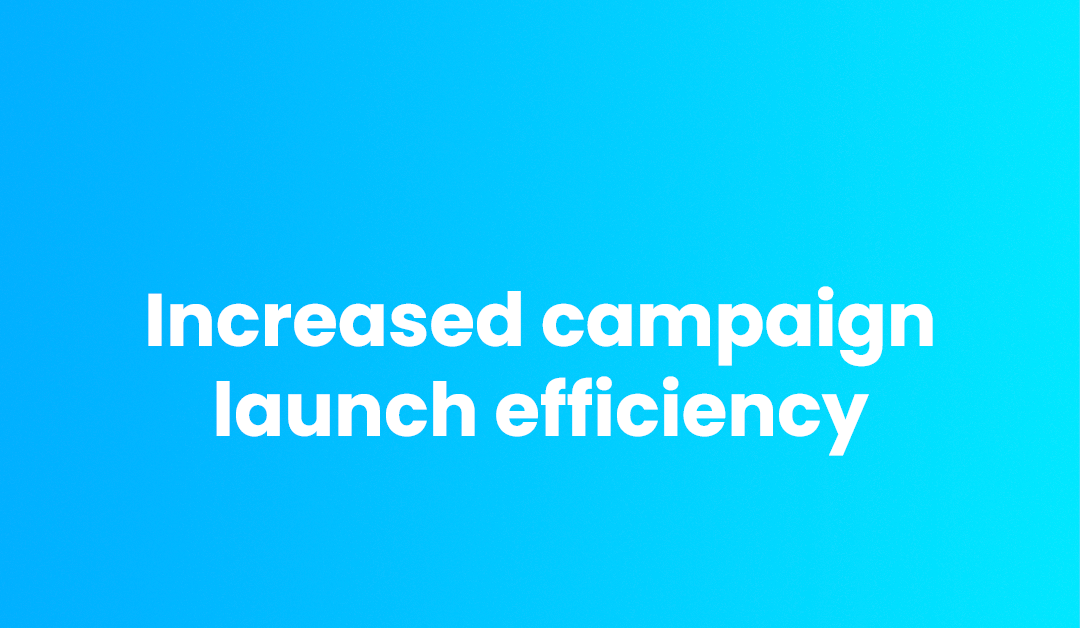‘Thought leadership’ can be a burdensome concept, bringing expectations of sharing unique pearls of wisdom. This can encourage the belief that it’s both rare and hard to generate so, for many, it’s seen as a difficult task that people are reluctant to take on.
Reframing this mindset is the first step to high-quality, low-effort thought leadership.
Break it down, and ‘thought leadership’ is just another name for sharing your brand’s point of view on your industry and its trends, the challenges your customers face, and your experience of how best to overcome them in efficient and profitable ways. In fact, your experts and frontline professionals probably do this every day without really thinking about it. In the light of this, the real issue is how to make capturing and sharing your insights a quick and easy process. Here are a few quick tips for keeping your thought leadership content relevant and flowing.
1. Give your core ideas fresh headlines
It’s rare that your brand viewpoint will change dramatically overnight, which means the core of your existing thought leadership content will be relevant for a good length of time. But this doesn’t mean it has to stay in its original format – or that it has to be completely reimagined to be valid.
Think about setting your central points in today’s context, giving them a new wrap. Has there been a news event that’s relevant to your industry? What are customers particularly asking your frontline professionals about? Using these angles will increase impact and reinforce perceptions that you have your finger on the industry pulse.
2. Think smaller – as long as its relevant
Not every piece of thought leadership has to be a multi-layered, wide-ranging analysis tackling a broad issue. A single thought or recommendation offered at the right moment can reinforce your position as a guide or source of expertise. If your advice has helped one customer, chances are it will find a wider audience.
There’s a strong argument for becoming a consistent and frequent thought leadership voice, sharing opinions and insights regularly to the point where key decision-makers within your industry wonder what your take is on any arising issue.
3. Make it easy to capture and share expertise
Much of your thought leadership is already in existence; it’s just a matter of capturing and sharing it. Between them, your subject matter experts and experienced sector leaders have a wealth of significant insights that would be useful to customers, your target market and beyond. From advice on navigating current and future trends, to a deep understanding of how to optimise solutions and practical experience of overcoming sector challenges – you already have much of the thought leadership you need within your company.
For many organisations, however, extracting this insight and turning it into shareable content is an arduous process, dependent on the individual expert finding the time to create the asset. One of the most effective ways to make thought leadership creation easier is to lift the burden from the experts. Using carefully planned questions and structured interviews the marketing department and its partner agencies can quickly and easily gather the raw materials they need to create readable, valuable content.
What can low-effort thought leadership look like?
Here’s a selection of ideas we’ve used successfully with our clients, to get you thinking.
- Get your CEO to share their thoughts on a current topic in a quick interview that can then be ghost-written into a blog post or longer-form LinkedIn post. Issue a quick email to key decision-makers with a punchy subject line to encourage access and spread the word further.
- Ask subject matter experts to review the content of existing whitepapers and give guidance as to where gaps are, given current market conditions. This is a great shortcut for identifying where your expertise will be most effective and where a new whitepaper or mini-whitepaper can really move thought leadership forward.
- Ask frontline professionals what the top pain points for customers are, and create an email campaign addressing them, including signposting to existing content that can advise on the issue.
- Build the LinkedIn presence of your senior leadership team with regular ghost-written thought pieces commenting on current trends.
Increase your thought leadership content the easy way
One of our strengths is the ability to translate complex, technical concepts into accessible, compelling content aimed at decision-makers who may not have a specialist background. We ‘speak’ your industry’s jargon and understand its intricate workings, yet can also filter through expert inputs to pull out what matters to customers. With a 20-year track record of interviewing specialists and presenting them with punchy thought leadership content they’re happy to sign off, we make thought leadership generation easy.
Do get in touch if you’d like to tap into our experiences and see how they could work for your organisation.
Twenty years at the forefront of B2B marketing means we’ve played an active role in the evolution of strategic business communications. In that time, game-changing technologies have redefined the marketing landscape – creating exciting new types of content and marking the end of the line for others.
But amongst all this transformation, some things haven’t changed. The key to developing great content and campaigns is – and always has been - messaging that engages the target audience. Understanding the pain points, goals and fears of each specific audience is foundational, and from there we pool our creative resources to hit our ABCs – ensuring everything we create is Accurate, Bold and Compelling.
Once this foundation is perfected, there are a few hard-hitting forms of marketing content that consistently capture our audience and make sure our messages hit their mark. Proving their value again and again by engaging, educating and converting B2B audiences, here’s some of the B2B content that’s stood the test of time:
Hard-wearing whitepapers
It’s hard to imagine what B2B marketing would look like without whitepapers. For decades, these in-depth reads have formed the centrepiece of carefully co-ordinated campaigns – with satellite content driving traffic back to their key messages. With a strong reputation for educating readers on the latest trends, industry challenges and innovative solutions, they’re a firm favourite among business leaders. And they’re a powerful way to build trust and credibility with senior decision makers thanks to their detailed expert messaging and well-evidenced thought leadership.
Captivating case studies
A powerful way to demonstrate real-world success, case studies give prospects concrete evidence of an organisation’s expertise, capabilities and successes. Using measurable results and letting customer testimonials speak for themselves, case studies are a persuasive form of content that boast one of the highest conversion rates in B2B. A timeless marketing asset for businesses, they deliver consistent results at various stages of the buyer journey.
Buoyant blog posts
Blog posts have been a constant feature of digital marketing, despite their format constantly adapting to cater to sophisticated SEO algorithms and reader preferences. A quick and easy way to tap into advice and expertise, they’re a popular type of content that helps to keep your audience keyed-in. Done right, they also enhance SEO, drive organic traffic to your website and are a powerful way of reaching new customers through guest-posting and multi-channel sharing.
Enduring emails
Email marketing is one of the most effective ways of delivering your message straight to the prospect. Far from the spam of the early 2000s, emails are now a sophisticated way of creating tailored content that speaks directly to each reader’s goals and challenges. Whether sending customised newsletters, specific product updates or personalised interacts, directly targeting your audience via their inboxes is a powerful way to nurture leads and build interpersonal relationships.
Worth-the-wait webinars
When it comes to webinars, the numbers really stack up. According to Dr James McQuivey, one minute of video is worth 1.8 million words, so it’s no wonder webinar content has been building traction since the 1990s. These online seminars are an engaging way to showcase expertise, demonstrate product features and engage in conversation with prospects. And because audience members typically register their attendance, they’re also a strong opportunity to capture leads and launch one-on-one sales conversations.
Playing the marketing long-game
Our 20th anniversary has been a great time to reflect on the tried-and-tested marketing that consistently delivers results for our clients. But despite this milestone, we know you’re only as good as your last piece of work. That’s why we’re so dedicated to creating market-leading content, and our team’s always scanning the horizon for the next big thing we can offer our clients.
To discover how we can build B2B marketing content that delivers for your business, please get in touch.
19.10.23
Do you remember when...?
To celebrate our 20th anniversary, we’re taking a trip down memory lane. Here’s a taste of the content that was working marketing wonders in the days when mobile phones were just becoming ubiquitous, offices were filled with desktop computers and Google Maps didn’t even exist.
Traditional print media
The world wide web was still a baby back in 2000, so digital didn’t hold the marketing mettle it does today. Aside from the odd pop-up ad or email, traditional marketing dominated. Print was the go-to channel as marketers churned out research papers, flyers and branded flip calendars for office desks. Rather than being posted online, content was used at events and business meetings and shared via CD-ROMs.
Direct mail advertising
We’re not talking about LinkedIn here, we’re talking direct mail in the form of postcards, letters, brochures and catalogues that used to drop right through your letterbox or onto your desk. Personalisation was on the rise thanks to better data processing, helping marketers to understand audience behaviour. Like today, these pieces of content were usually integrated into a wider, strategic marketing campaign.
Telemarketing
Back in the early noughties, the Nokia Tune was more recognisable than the Coca-Cola theme and that’s partly thanks to the proliferation of telemarketing. Getting a call on your mobile phone was still novel and people typically responded well to a direct, personal approach. Trust, rapport and relationship building were all foundational to this method of marketing, but as time went on scams and overuse of the channel meant it wore thin with customers. Do-not-call lists and a preference for digital channels among younger generations meant it was soon replaced with the more modern approaches we’re familiar with today.
Getting to grips with Google
Digital marketing was just becoming visible on the horizon, with Google's AdWords platform launched in 2000. This service marked the beginning of pay-per-click (PPC) advertising and SEO - and the most forward-thinking organisations were just beginning to put together web-based marketing strategies. In just 20 years, the burgeoning area of digital marketing has grown exponentially across both B2B and B2C with once unknown concepts like ‘going viral’ securing a place in our collective psyche.
Why we’re still here, 20 years on
While the methods we use to reach your target audience might have changed, our creativity and dedication to strategic, effective marketing hasn’t. Get in touch today to see how we can work with you to create content and campaigns that will keep your audience coming back for more.
20.9.23
Storytelling is part of who we are. It’s been around for millennia as folklore, old wives’ tales, cave paintings, ancient scripts, poetry and song. Stories have a powerful, innate purpose. Not only do they entertain and enthral and create a sense of community, but they're a survival tactic. These nuggets of wisdom are used to pass down vital knowledge from generation to generation. And so, story forms the basis of religion, philosophy, art (books, film, paintings, music) and the fabric of society in general.
Interestingly too, stories often carry a warning or a moral. They teach us important lessons. The most effective storytelling speaks to our needs, desires and weaknesses. It grabs the audience’s attention and taps into our emotions. As an exciting story unfolds, it takes the reader on a journey. It activates our imagination, encouraging us to guess what is coming next.
These are some of the features of the ancient art of storytelling that make it a compelling and effective medium to connect with your audience.
Resonating on a personal level
Stories invite us to identify with characters or aspire to be like them. Take, for example, the personal journey that rock climber Shauna Coxsey documents through her social media as she recovers from a knee injury. She has a huge following, with thousands of people cheering her on, admiring her courage and empathising with her pain. It’s easy to feel connected to her even if you’ve never met her. Her struggle feels real and her words are authentic. Her followers engage with what she's saying and many even try out her recovery tips.
Identifying with characters or situations in stories like this builds a bond and develops trust. It elicits an emotional rather than logical response, inspiring the reader and sticking in their memory. This is undoubtedly a factor behind the rising popularity of influencer marketing.
Giving structure and narrative
The best way to structure your ‘story’ when writing content is similar to structuring a plot line: start with setting the scene, then introduce a challenge or some kind of tension and explore this. Finally, explain the solution and come to a resolution. You may have seen a plot line represented visually as a peaked graph with climax – this kind of structure keeps the reader engaged and excited.
By starting with the challenge and then introducing a resolution, you are compelled to focus on the audience and their needs, rather than immediately writing about how great your product/service/brand is, which can turn people off.
Providing a greater sense of purpose
One final aspect to storytelling which appeals to our collective consciousness is the idea of belonging – being part of a bigger narrative. Donald Miller, author of Building a Story Brand, explains “brands that give customers a voice in a larger narrative add value to their products by giving their customers a deeper sense of meaning”. He uses Tesla as an example, one of the most talked about brands of the 2020s. They don’t just offer their customers a car, they invite them to be part of something bigger, a futuristic sci-fi style narrative that focuses on saving the environment through new technology.
Weaving a story that positions the audience as part of a greater and united cause gives purpose and meaning to what you are saying. Words by themselves only have so much impact, it’s the story you tell with them that will leave a lasting impression.
If you think you need some more storytelling pointers or you’d like some support creating content, please get in touch.
21.08.2023
There's enormous value to ensuring your team is a multi-skilled marketing taskforce, with all the diverse talents and expertise to take on a range of different projects.
Across a single department, this could span content creation, digital marketing, data analysis, event planning, social media management and video editing to much more.
Here are just some of the many benefits of having a versatile, well-rounded and well-informed marketing team:
1. Enhanced adaptability and resilience
Multi-skilled teams have a knack for rolling with the punches. When challenges come knocking, they adjust their approach without skipping a beat. If someone calls in sick? No problem – there's always someone else who can pick up the slack. And when the unexpected happens (we’re looking at you, COVID-19), a multi-skilled team can pivot and adapt.
2. A culture of innovation and creativity
Having wide-ranging talents in your team fosters a greater culture of creativity and innovation. Diverse skills mean diverse ideas and in marketing, that's pure gold. More angles, more insights, more 'eureka' moments - your campaigns will have the innovative edge that gets your audience clicking, reading and buying.
3. Greater efficiency and cost-effectiveness
Having a team of marketing all-rounders is smart economics. Projects that would typically involve several departments can be completed within one, saving time, reducing communication bottlenecks and cutting down on everyone’s favourite – unnecessary meetings.
4. Comprehensive understanding
A multi-skilled team delivers a 360-degree view of the marketing landscape. From SEO to content creation, social media to event planning, every aspect can be covered. This holistic view leads to smarter decisions and more integrated and effective campaigns.
5. Fostering continuous learning and growth
Perhaps one of the most exciting benefits of being part of a highly competent, multi-disciplinary team is the golden opportunity for self-improvement. When you're surrounded by teammates who each bring something unique to the table, learning becomes a daily routine. This constant exchange of skills and knowledge doesn’t just make the team stronger, it also promotes individual growth, which in turn leads to increased job satisfaction, loyalty and enhanced team morale.
A word of caution
A multi-skilled team doesn't mean everyone needs to become an expert in everything. That could lead to a "jack-of-all-trades, master-of-none" scenario, diluting the overall value of your in-house expertise. Instead, it's about fostering enough overlap in skills to enhance collaboration, understanding and the ability to step in when necessary.
The aim isn’t for your SEO specialist to turn into a graphic designer, but to understand enough about design to contribute ideas and collaborate more effectively with the design team. This approach promotes a culture of continuous learning while avoiding unnecessary skill acquisition.
Our unique and diverse marketing skills
These are just some of the reasons why building a multi-skilled marketing team is a considerable and worthwhile investment. Encouraging your team to start learning new skills and gaining experience in new areas takes a considerable amount of time, trial and error and even extra-curricular dedication. But in the long term, the returns will be enormous. Once harnessed, it’s a powerful weapon for any business.
For twenty years now, we’ve been developing our marketing team’s skills and experience across a range of areas. If you’d like to find out more about what our diverse team of experts could bring to your organisation, please don’t hesitate to get in touch.
20.07.23
Can’t decide what to eat at a restaurant? Not sure what colour to paint the living room? Torn about which movie to watch tonight? Indecision is part of life, and for most of us, it’s not a significant consideration. But what happens when it’s a potential customer who’s wavering on whether to enlist your services?
When you’re dealing with a prospect who’s grappling with uncertainty, the right marketing is key to helping them commit to a purchase. Carefully crafted marketing messages, deployed as part of a campaign that systematically reinforces and builds on these, are key. In this blog post, we’ll unpick some of the science around indecision, and look at powerful, proven ways marketing can help people overcome it.
Defining indecision
Starting with the basics, if a customer’s facing indecision, they’re experiencing a type of chronic procrastination that happens when someone has to make a choice. Overwhelmed by the number of options or the nuances of just a few choices, people typically end up either spiralling into extensive research or simply putting the impending decision out of their mind. At this point, the individual reaches a stalemate, unable to make a call and move forward.
Driving indecisive audiences towards decisive actions
Indecision isn’t all bad. There’s a growing body of evidence that suggests indecisive people are less likely to be swayed by confirmation bias. That means that, rather than favouring pieces of information that support their previously held views, they’re better at taking the information presented to them and weighing this up to make a more balanced decision. They’re also more likely to be perfectionists – and therefore scared of making a ‘bad’ or ‘wrong’ decision.
These traits can be a win for marketers. One of the most common methods that indecisive people use to come to a decision is to consider their goals and the pros and cons of various options. Armed with this insight, you can gear your marketing to help them out. Prioritise concrete information that sets you apart from your competition and highlight the ways that you help customers to reach typical goals in their industry. Use stats, facts and clear language and deliver these at regular intervals to keep momentum behind the decision-making process.
Keeping things fresh for the future
Another useful insight to have up your sleeve when marketing to indecisive customers is that people typically experience greater satisfaction if they “choose the action that represents a change, rather than continuing the status quo”. New products, services, versions and additions to your current offering can all help to replicate this feeling of change and progress – meaning current customers don’t have to move on to another B2B relationship to keep things fresh. It’s vital your marketing capitalises on this by regularly updating messaging, highlighting additional benefits and drawing attention to new uses in the marketplace.
Keeping marketing engaging and persuasive – even for the most indecisive audience members – is at the heart of what we do here at asabell. We’d love to speak with you about how we can help ensure your marketing is successful, so please get in touch with one of the team to find out more.
22.6.23
‘Award winning’ is a powerful statement, and being shortlisted or nominated for a prestigious accolade brings public recognition of your organisation’s hard work and expertise.
Participating in industry awards is a valuable marketing opportunity for your organisation – helping you to connect with other key industry players, benchmarking your achievements against others and upgrading your peer-to-peer status via a third-party public endorsement.
In many cases, a well-executed award strategy can even elevate industry awareness, strengthen relationships and boost credibility – whether you actually win or not.
Here are some of the key benefits of entering your organisation into industry awards:
Persuading the panel
Most businesses are ‘in it to win it’, entering awards because they want to take home the top prize. But winning isn’t always about how hard you worked, as much as how persuasively you told your story to the panel of judges.
Costly, complex and often requiring screeds of information related to specific categories, award entries require significant time and skill. So, unless storytelling is your strong point, it’s worth bringing experienced support onboard to craft a relatable, emotive and inspiring submission that will significantly increase your chances of winning. Similarly, many awards also allow visual elements to be included, like graphics and photographs. Bringing an experienced design team into the equation will help you create an eye-catching entry that grabs the full attention of the judges.
Marketing along the road to success
If you’re a viable candidate, you’ve already done all the hard work. Once you’ve brought external marketeers onboard, make sure you share all the details of your project with them – including anecdotes, resources, facts and figures. From here, they’ll work with you to carefully analyse the criteria and find where your efforts best fit, selecting your best candidates and categories.
After this, they’ll conduct interviews and research to build a bigger picture of the nominated individuals or pieces of work. Building a compelling case will be about uncovering powerful human-interest stories, impressive figures or stats and showcasing the unique details that make an entry stand out from the crowd.
Maximising the timeline
While it’s tempting to sit back and relax once you’ve submitted an entry you’re proud of, there’s still plenty of work to get on with. Working with your marketing partner, there’s a wealth of traction to be gained from capitalising on key opportunities during an award timeline, starting with the shortlist releases and moving towards the final ceremony.
Use a carefully coordinated programme of strategic marketing to capitalise on prime moments, show off your brand and gain maximum attention. For example, shout about your shortlist on social media, use your nomination to promote a related case study or discuss the project you’ve entered in a blog post. Videos, web banners, newsletter entries, press releases and other content can all be used to highlight your participation, qualifying accomplishments and successful milestones in the competition. While the ultimate goal is to win, use the entire award process as a springboard to create a positive focus on your brand.
Congratulations, you’ve won
Of course, this mileage extends considerably further if you win. Winning an award is a lightning rod for positive attention. Your prospects and clients will be looking to you, so use this to outline the solutions and people that helped you win how support and other services or products that relevant outstanding feedback from the judges or awarding body
And as soon as possible after the announcement, start notifying partners, customers and potential new leads about your success. This will help with the process of transforming your win into new revenue streams and income. Something as simple as including the award logo underneath your email signature is a subtle way to keep reinforcing your brand’s credibility long after the occasion.
Put your entries into safe hands
We have twenty years’ experience crafting award-winning entries for our clients. Whatever the industry and award criteria, we know how to gather the unique stories, impressive stats and strong testimonials to develop submissions that succeed. And while we’re proud of our impressive success rate, we also know it’s not all about winning.
Once the entries are in, we can help you seize this golden opportunity to coordinate organisation-wide marketing efforts that maximise the benefits for your brand and garner positive attention from clients and prospects.
If you’d like to find out more about how we could create award-winning entries for your organisation, please get in touch.
25.5.23
No business is an island - especially not in B2B.
Very few B2B organisations would survive without a network of collaborators, strategic alliances and supply chain partnerships. These successful relationships are one of your business’ strengths, but many organisations are missing a trick by failing to share them with their target market.
Strategic partner marketing is a growth area in the B2B space. Whether celebrating distribution channels, resellers or new collaborative products and services, many organisations recognise that combining their marketing efforts offers a range of mutual benefits, including:
Key considerations for partnership campaigns
Delivering a successful and cohesive partner marketing campaign requires considerable communication and understanding. Before embarking on a partner campaign, there are some critical areas to establish:
1. Find your partnership story
Why did your partnership come about? The most effective B2B partnership campaigns have an engaging origin story like a pressing challenge or shared customer pain point. From here, you can use your marketing to illustrate how, together, you were able to successfully solve the problem before explaining how it brings benefits to both sets of customers.
2. Consistency is key
Alongside getting your stories straight, your brand values and messaging must be aligned, too. It’s vital both organisations are clear and consistent about what they want to mutually achieve, how they’ll work together to achieve it and how the relationship will evolve from there. Clear aims will keep your marketing on track and ensure every piece of content is used strategically to further your partnership goals.
3. Keep messaging simple
Cobranding can be complex. Ensure that both teams start out on the same page and have a thorough understanding of each other’s brand guidelines, target audience, preferred content and tone of voice. This might mean creating shared brand visuals and examining each other’s house style to prevent clashes over things like logo placement.
Throughout the partner campaign, both parties will need to stick closely to these agreed rules to avoid overcomplicated or off-brand content. Simplicity is key to ensuring consistency and continuity across both organisations’ marketing teams.
4. Recognise your combined strength
At the heart of your joint marketing efforts there must be a clear message: how your partnership benefits customers. Outline what each organisation brings to the table and how your different experiences, solutions and services complement each other and add value for your target audience.
5. Understand your new audience
Partner marketing campaigns should expand each brand’s audience by offering access to each other’s customers and followers. Carefully consider which sector of your partner’s audience you want to reach and devise a clear strategy to target them. If possible, consult your partner for support – they should know their audience well.
6. Integrate your campaigns
To generate the most value, be strategic and plan the marketing materials you’ll jointly create and share. There’s a wealth of potential for collaborative thought leadership - think guest expert articles / blog posts, video interviews, joint webinars, co-hosted events, even combined whitepapers and case studies.
Celebrate your partnerships
The benefits are clear but there’s a lot to consider before setting out on a partner marketing journey. An expert steer can help. We have plenty of experience creating content marketing that celebrates our clients’ valuable partnerships and strategic alliances – helping them to illustrate to their customers the value of their partnerships while attracting new audiences in the process.
If you’d like to find out more about our strategic partner marketing strategies and what we could do for your organisation, please get in contact.
27.8.22
As a B2B content commissioner, a prime part of your role is to make sure internally and externally produced content speaks with your brand’s tone of voice – but what does that mean in practice?
All too often, corporate brand guidelines focus on a list of aspirational statements and are light on detail – the specifics of what you should be looking for when you review blog posts, whitepapers, brochures and eBooks. Vague, subjective pointers like ‘be inspirational’ aren’t always the type of practical guidance you need.
We’ve been interpreting and implementing global organisations’ tone of voice guidelines for over 16 years now, so here’s a brief rundown of our top tips…
1. Look beyond the aspirational aims
Use any tone descriptors to give you a flavour of how a brand aims to sound, but don’t get too hung up on trying to interpret them into concrete examples. They’re usually included to paint a word picture, rather than to provide hard-and-fast rules. Remember, too, that these descriptors are highly subjective: what’s ‘visionary’ for one person could well be exaggeration for another.
2. Take your guidance from the examples
Good tone of voice guidelines will include plenty of examples, usually demonstrating before and after scenarios. This is where you can really get to grips with the mechanics of tone, seeing it in action and understanding how it varies between different content types. Often you learn as much from what the brand team doesn’t want than from what it does.
3. Remember the constants of any brand voice
The brand voice may go through many updates, but the fundamentals of tone will remain the same:
- communicate clearly and directly, leading with the benefits for the target audience
- get to the point – take out any sentences that don’t add value
- cut the jargon
- beware of over claiming – it’ll devalue your message
- use an appropriate level of explanation – don’t assume and don’t patronise
- be led by your audience – the tonal shade that works for CEOs might not be right for colleague communications.
4. Get a second pair of eyes on it
Particularly in the early days of a brand voice update, it’s often useful to get a marketing colleague to review the tone of a piece of content. This way your team will quickly build up a shared view how your brand voice should be brought to life and will be ready to give constructive feedback to content creators.
5. Connect with your brand team
Your brand team have invested huge amounts of time into developing the tone of voice guidelines and they know them better than anyone else, so use your brand colleagues. It’s never helpful when marketing departments see brand as a hindrance to getting content out. Instead, see the brand team as a resource you can tap into for clarification and guidance. Bringing brand in on your first few content reviews, or on any tricky issues, is always a good idea and will deepen your tonal knowledge for the future.
We are experts at creating B2B content in your brand voice. Get in touch if you’d like to find out more about working together.















